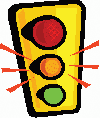Fluency—what is it?
Florida Standards define fluency as the ability to read with sufficient accuracy and fluency to support comprehension. Students must read emergent-reader text with purpose and understanding. When fluent readers read silently, they recognize words automatically, and they group words quickly to gain meaning from what they read. Fluent readers read aloud effortlessly and with expression. Their reading sounds natural, as if they are speaking.
Fluency is the ability to read with sufficient accuracy and fluency to support comprehension. Fluent readers do not have to concentrate on decoding the words; they can focus their attention on what the text means.
Fluency develops gradually over time and through substantial practice. At the earliest stage of reading development, a student's oral reading is slow and labored because he or she is just learning to "break the code"—to attach sounds to letters and to blend letter sounds into recognizable words. Repeated and monitored oral reading improves fluency and overall reading achievement. Students who read and reread passages aloud as they receive guidance and feedback become better readers.
Researchers have found several techniques to be effective including the reading and rereading of text a number of times until a certain level of fluency is reached.
Another effective technique for building fluency is to practice oral reading through the use of audiotapes, tutors, peer guidance, or other means.
No research evidence is available currently to confirm that instructional time spent on silent, independent reading with minimal guidance and feedback improves reading fluency or overall reading achievement. Although this activity's value has neither been proved nor disproved, the research suggests that, especially for struggling readers, there are more beneficial ways to spend in-class instructional time.
When building fluency, students should read material at their independent level. This means they should not encounter more than one word in 20 that is too difficult. If the student can read the material without finding more than one in 10 words difficult, the material is at the student's instructional level. If the student finds more than one word in 10 too hard, then the material is at the student's frustration level.
Student reading levels
The term student reading levels refers to the relationship between a specific selection or book and a student's ability to read that selection.The following are common terms used to describe these levels. Click on each term to read the explanation.
|
Now click on the yellow light. |
 |
The following link from Reading Rockets goes in-depth on various ways to analyze student reading difficulty and skill level.
https://www.readingrockets.org/teaching/reading101-course/modules/assessment/assessment-depth
